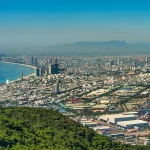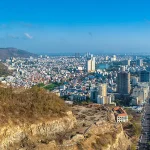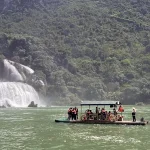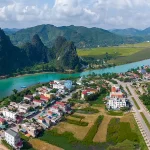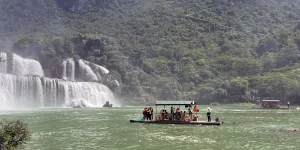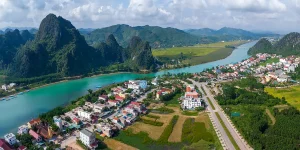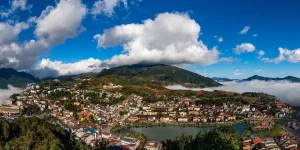Welcome to your essential Vietnam Travel Guide for 2025—a clear, experience-based resource to help you plan smarter and travel deeper.
Table of Contents
Why Coming to Vietnam
From misty mountains in the north to floating markets in the south, Vietnam is a country of striking contrasts and vibrant daily life. Expect motorbikes weaving through alleyways, steaming bowls of pho served curbside, and centuries-old temples tucked between modern buildings.
Whether you’re drawn to cultural heritage, tropical coastlines, or off-the-beaten-path adventures, this guide covers everything you need—from visa tips and transport to hidden gems and local etiquette.
Fast Facts About Vietnam
- Capital: Hanoi
- Official Language: Vietnamese
- Currency: Vietnamese Dong (VND)
- Time Zone: Indochina Time (ICT), UTC+7
- Population: Approximately 100 million (2025 estimate)
- Main Airports: Noi Bai International (Hanoi), Tan Son Nhat International (Ho Chi Minh City), Da Nang International
- Best Time to Visit: November to April
- Driving Side: Right
- Entry Requirements: Visa or visa exemption for certain nationalities. Passport with 6 months validity
- Health Tips: Avoid tap water. WHO Recommended vaccinations: Hepatitis A, Typhoid, and Tetanus.
- Emergency Numbers: Police: 113, Medical Emergency: 115
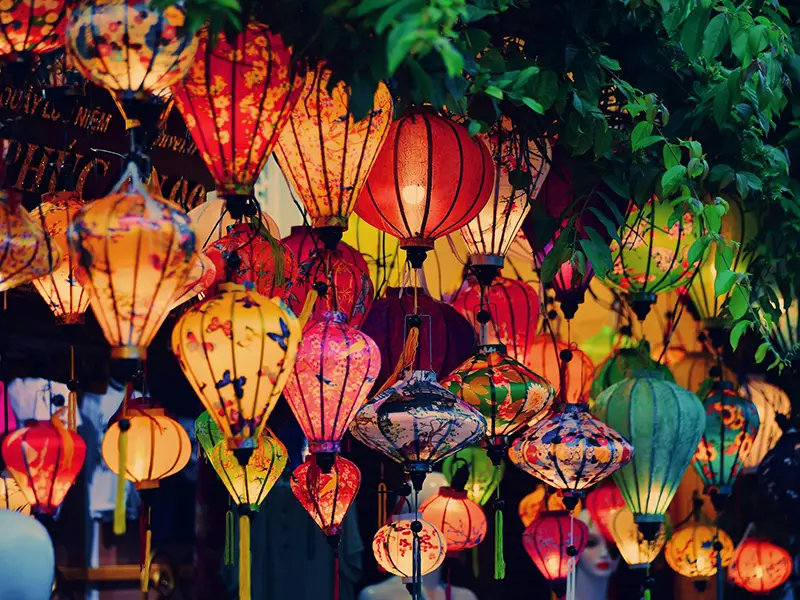
Know Before You Go: Vietnam Trip Planning
Planning a trip to Vietnam means getting ready for a rich and diverse experience. A little preparation goes a long way to ensure a smooth experience. From securing a visa to choosing the best time to visit, understanding connectivity options, and packing appropriately, this section covers everything you need to know before stepping foot in Vietnam. Let’s dive into the essentials to make your journey unforgettable.
Do I Need a Visa to Vietnam?
Vietnam’s visa policy varies by nationality, but recent updates have made the process easier than ever. As of August 2023, citizens of all countries and territories can apply for a 90-day e-visa, including multiple entries. The application costs around $25 USD, takes 3–5 business days, and must be completed through the official government portal: https://evisa.gov.vn
When applying for an e-visa, ensure that your intended port of entry is among the designated entry points. Vietnam has 13 international airports, 16 land border crossings, and 13 seaports that accept e-visa holders. Not all border crossings accept e-visas, so it’s crucial to confirm this in advance.
In addition, citizens of select countries—including Germany, France, Italy, Spain, the United Kingdom, Russia, Japan, South Korea, Denmark, Sweden, Norway, and Finland—can enter Vietnam visa-free for up to 45 days. Travelers entering under this exemption have a wider range of entry points and can typically enter at almost any international border, airport, or seaport. Still, it’s wise to double-check entry policies before arriving.
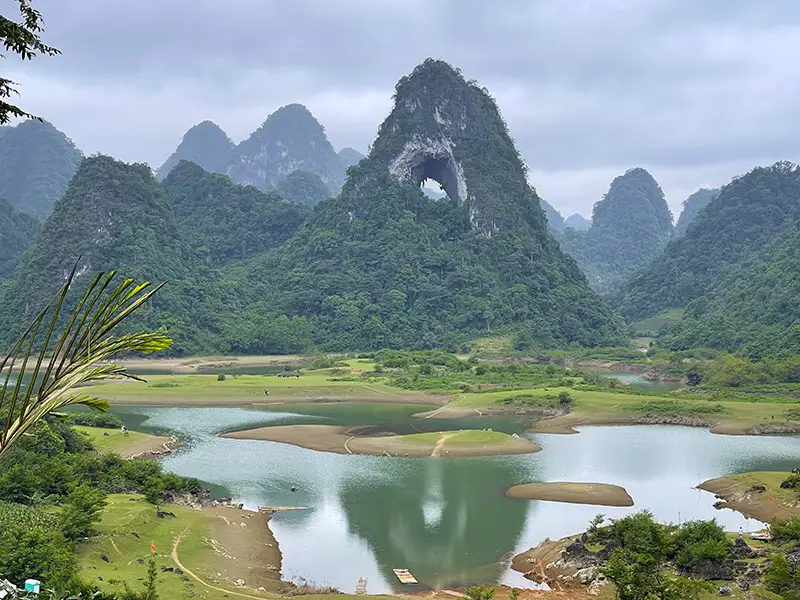
When Is the Best Time to Visit Vietnam?
Choosing the best time to visit Vietnam depends entirely on your travel goals and the regions you plan to explore.
Stretching over 1,000 miles (1,600 kilometers) from north to south, Vietnam spans three distinct climate zones and features everything from lowland beaches to high mountain ranges. That means there’s no single “perfect” month that fits all types of trips—but the good news is, there’s always somewhere worth visiting in Vietnam, no matter the season.
For example, while central beaches like Da Nang may be getting drenched in rains, the northern mountains around Sapa might be basking in golden rice field views under clear skies. This regional variation makes Vietnam a year-round destination—especially if you tailor your itinerary to seasonal advantages.
If you’re planning a short trip focused on specific places or activities—like a romantic cruise in Ha Long Bay or an adventurous motorbike ride along the Ha Giang Loop—we highly recommend checking out our Best Time to Visit Vietnam Guide for destination-specific insights.
Vietnam’s Dry Season (November to April)
The most popular time to visit Vietnam is during its dry season, roughly from November to April. During this period, much of the country experiences less rainfall and milder temperatures—ideal for sightseeing, outdoor adventures, and cultural exploration. It’s the best time if you plan to travel through multiple regions, as weather conditions are generally pleasant across the board.
That said, don’t expect perfection everywhere: while the north might be crisp and cool, the south can be warm and tropical. Still, your chances of enjoying consistent weather across all three climate zones are higher during this window than at any other time of year.
Keep in mind that December and January are peak months for both international and local tourism, so expect larger crowds and higher prices, especially in major destinations like Hanoi, Hoi An, and Ho Chi Minh City.
Vietnam’s Rainy Season (May to September)
The low travel season typically falls between May and September. This period is marked by high humidity, heavy rainfall, and occasional typhoons—especially in the north and central regions. Temperatures can soar, making it less comfortable for extended outdoor activities.
However, don’t write off this season entirely. It’s a great time for budget travelers, as accommodation prices tend to drop and popular attractions are far less crowded. Plus, the south (including Ho Chi Minh City and the Mekong Delta) often enjoys shorter, more predictable rain showers—usually in the late afternoon or evening.
Insider Tip
In Sapa, rice terraces shift with the seasons—empty in spring, lush green by July, and golden yellow from late September to early October.
Festive Seasons in Vietnam: What to Know

When it comes to culture, Tet—the Vietnamese Lunar New Year—is both the best and worst time to visit. This major national holiday falls between late January and mid-February, with exact dates shifting each year based on the lunar calendar. In the days leading up to Tet, cities come alive with festive energy: markets overflow with flowers, food stalls, and decorations; families clean and prepare their homes; and temples fill with offerings and prayers.
As a visitor, Tet can be a memorable experience. You might see dragon dances, fireworks, and traditional dishes that aren’t found at other times of year. However, the downsides are worth considering. Most restaurants, shops, and travel services close for up to ten days, sometimes longer in smaller towns. Buses and trains are fully booked well in advance, prices go up, and many tour agencies pause operations completely. Immigration offices and visa processing also shut down during Tet, so plan accordingly if you need any extensions or paperwork.
Other holidays that may impact travel include Reunification Day (April 30), Labor Day (May 1), and National Day (September 2)—all of which lead to busy domestic travel, higher prices, and limited services. If your trip overlaps with any major holiday, it’s best to book transportation and accommodation early and expect some disruptions to your plans.
Wi-Fi, SIM Cards, and Internet Access in Vietnam
Staying connected in Vietnam is generally easy and affordable. Free Wi-Fi is widely available in hotels, cafes, and restaurants, especially in cities. However, speeds can be inconsistent or slow in rural and mountainous areas like Sapa or Ha Giang.
For more reliable access, consider getting a local SIM card. You can purchase one at the airport (higher price) or at official mobile operator stores in the city—look for Viettel, Vinaphone, or Mobifone. Tourist SIM packages typically cost $5–$10 for 30 days and include 1–2 GB of daily data. It’s best to activate the SIM at the store to avoid setup issues or language barriers.
Viettel is known for having the widest coverage in remote areas, making it a good choice if you plan to explore off-the-beaten-path destinations. Mobile coverage is excellent in urban areas, though 4G may occasionally drop to 3G in mountainous regions.
Best Places to Go in Vietnam
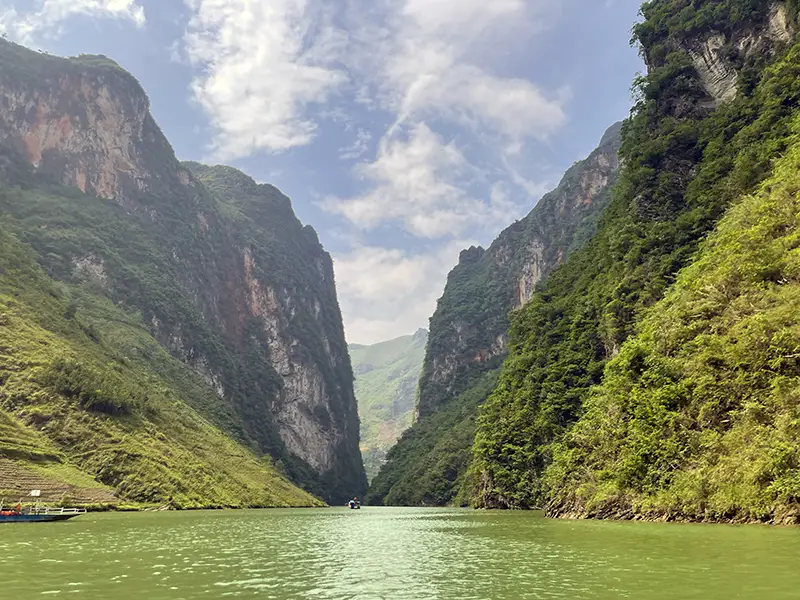
Vietnam’s regions each offer distinct flavors. In the north, Hanoi buzzes with colonial architecture, vibrant street markets, and the serene Hoan Kiem Lake. Nearby, Ha Long Bay’s limestone islands and green waters are a UNESCO gem, perfect for overnight cruises. Sapa’s terraced hills and ethnic minority villages draw hikers seeking cool mountain air.
Central Vietnam shines with history and charm. Hoi An’s lantern-lit streets and tailor shops are a must, while Hue’s Imperial City offers a glimpse into royal history. Da Nang, with its sandy beaches and Marble Mountains, is a modern hub.
In the south, Ho Chi Minh City pulses with energy—think Ben Thanh Market and War Remnants Museum. The Mekong Delta’s floating markets and lush waterways offer a slower pace. For beach lovers, Phu Quoc’s white sands and clear waters rival Southeast Asia’s best.
Want a closer look at what Vietnam really has to offer? Check out Best Places to Visit in Vietnam
Best Things to Do in Vietnam
Vietnam’s activities are as diverse as its landscapes. In Hanoi, join a street food tour to savor pho (noodle soup) or banh mi (baguette sandwiches) from roadside stalls.
In Ha Long Bay, kayak through hidden lagoons or sleep on a traditional junk boat under starry skies.
Hoi An’s tailoring scene is legendary—get a custom suit made in 24 hours for $50–$150.
For adventure, trek Sapa’s rice terraces or motorbike the Ha Giang Loop, a rugged route with jaw-dropping mountain views. In Hue, cycle through rice paddies to ancient pagodas.
The Cu Chi Tunnels near Ho Chi Minh City offer a sobering look at Vietnam’s wartime history, where you can crawl through narrow underground passages.
Insider Tip
While Cu Chi Tunnels are a significant historical site, the section open to visitors is short and specially widened for tourists. Most of the original tunnel network is off-limits.
For a more immersive and authentic underground experience, head to the Vinh Moc Tunnels near Hue, where the original depth and layout are still intact.
How to Get to and Out of Vietnam
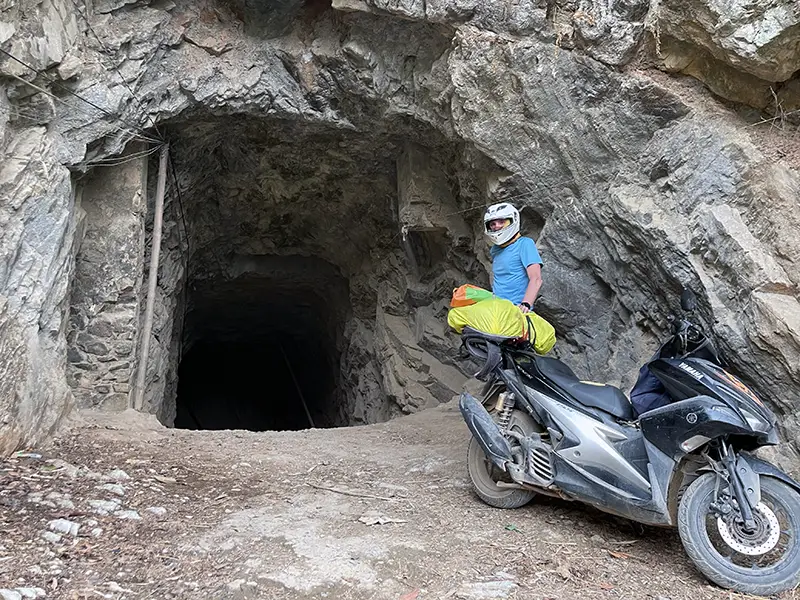
Vietnam’s main air hubs are Noi Bai International (Hanoi), Tan Son Nhat International (Ho Chi Minh City), and Da Nang International. Major airlines like Vietnam Airlines, VietJet Air, and international carriers connect Vietnam to Asia, Europe, and the US.
Cheap flights to Vietnam are often available through budget carriers like AirAsia or VietJet, with round-trip fares from Southeast Asian hubs like Bangkok starting at $100. From the US, expect $800–$1,200 round-trip from major cities like Los Angeles.
Overland travel is possible from Cambodia, Laos, or China via bus or train, though border crossings require proper visas. If you’re entering with an e-visa, make sure to check the official list of approved border crossings on evisa.gov.vn, as not all land borders accept e-visa entry.
How Many Days Do You Need in Vietnam?
Vietnam’s size and diversity mean trip length depends on your goals. A Vietnam travel itinerary of 7–10 days suits a quick highlights tour: 2 days in Hanoi, 2 in Ha Long Bay, 2 in Hoi An, and 3 in Ho Chi Minh City with a Mekong Delta day trip.
For a deeper dive, 14–21 days gives you time to explore Sapa, Hue, and Phu Quoc, along with popular highlights like Ninh Binh’s scenic landscapes.
Long-term travelers can spend 4–6 weeks, adding the Ha Giang Loop, Da Lat’s highlands, or Con Dao’s pristine islands.
Short on time? Focus on one region: 5 days in the north (Hanoi, Ha Long) or south (Ho Chi Minh City, Mekong).
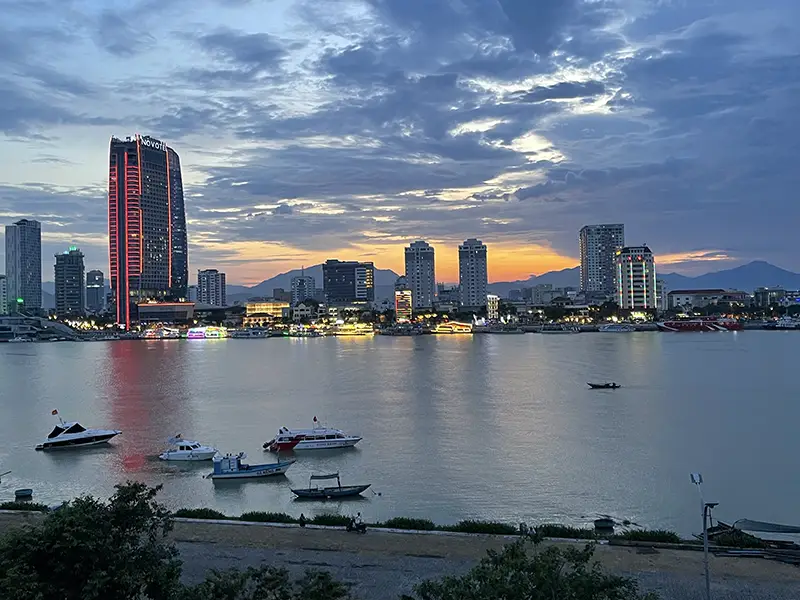
Vietnam Travel Cost
Vietnam is budget-friendly, but costs vary by travel style.
A travel budget for backpackers might be $25–$40/day, covering hostels ($5–$10/night), street food ($1–$3/meal), and buses ($3–$15/route).
Mid-range travelers can expect $50–$100/day, with boutique hotels ($20–$50/night), restaurant meals ($5–$15), and taxis or Grab rides ($1–$5/trip).
Luxury travelers might spend $150+/day on 5-star hotels ($100+/night) and private tours.
Card payments are widely accepted in cities, but cash (VND) is still king in markets, small shops, and rural areas. For exchanging money, jewelry shops (especially in city centers) often offer the best rates—even better than banks—and some can also exchange currencies of neighboring countries like THB, or KHR if you’re heading to Laos, Cambodia, or Thailand. Airport kiosks tend to offer lower rates.
ATMs are easy to find, but most charge $1–$3 per withdrawal. For lower fees, look for TPBank, VPBank, Agribank, or ACB, which are known for either low or fixed withdrawal charges. Note that daily withdrawal limits vary by bank and card issuer.
Is Vietnam Safe to Visit?
Vietnam is generally safe for tourists, with low violent crime rates. The US State Department and UK Foreign Office rate Vietnam as Level 1 (exercise normal precautions), though pickpocketing and scams occur in busy areas like Hanoi’s Old Quarter or Ho Chi Minh City’s District 1.
Unsafe activities include driving motorbikes without experience—traffic is chaotic, and accidents are common. Avoid remote border areas near Cambodia or Laos due to rare landmine risks. Street scams are still present, including overpriced taxis (use Grab or metered taxis) and fake tour agencies.
In cities, be cautious when using your phone in public—thieves on passing motorbikes often grab devices from distracted pedestrians. Always keep a firm grip on your belongings and stay alert in busy areas.
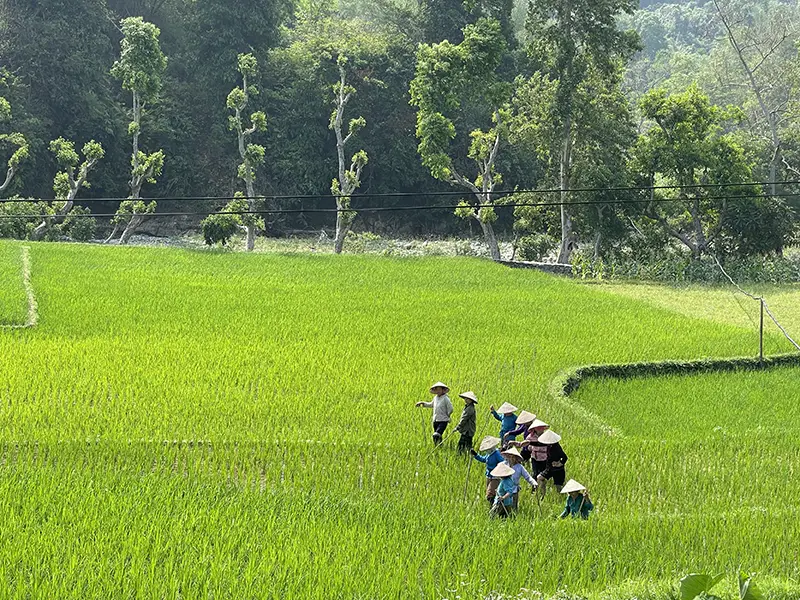
What to Pack for a Trip to Vietnam
For areas like Sapa (November–February), bring a light jacket and long pants, as temperatures can dip to 50°F (10°C). A raincoat or poncho is essential for the rainy season (June–September). Comfortable walking shoes are a must for cities and treks, as sidewalks can be uneven. For temple visits, pack outfits that cover your shoulders and knees—think a t-shirt with long pants or a maxi dress. A light scarf or shawl is also useful if you need to cover up on the go.
Include sunscreen, insect repellent, and a reusable water bottle to stay hydrated. A universal power adapter (Type A/C/F) ensures your devices stay charged. Carry a small first-aid kit with band-aids and anti-diarrhea medication, as street food can upset sensitive stomachs.
If you’re heading to more rural areas, consider bringing a few small souvenirs or fun items—like stickers or postcards—to share with local kids. It’s a simple gesture that often brings big smiles.
Useful Apps and Websites for Traveling in Vietnam
Navigate Vietnam with these apps:
- Grab, Be: For taxis and motorbike rides, safer than street hailing.
- 12Go / Baolau: Book trains, buses, and ferries with English interfaces.
- Zalo: Local messaging app for contacting homestays or guides.
- Shopee Food / GrabFood: Food delivery from local eateries.
- Lazada.vn – One of Vietnam’s largest online marketplaces. Great for ordering travel items, electronics, or last-minute essentials during longer stays.
With the essentials covered—from visas and packing to connectivity and cultural timing—you’re now well-equipped to plan a smoother, smarter trip to Vietnam. But this is just the beginning.
For more inspiration, regional guides, and real-world tips, visit our Vietnam Travel Page. And when you’re finally on the ground, the next part of this guide will help you navigate Vietnam with confidence—from getting around to local etiquette and everyday travel hacks.

Once Inside: Vietnam Travel Tips
Once you’re in the country, the real adventure begins—and so do the small surprises. This part of our Vietnam travel guide is packed with practical info for getting around, avoiding common issues, and making the most of your time on the ground. Whether you’re navigating busy streets or heading off the beaten path, these tips will help you travel smoothly, safely, and with more confidence.
What Is the Best Way to Travel in Vietnam?
Vietnam’s transportation options cater to all budgets. In cities, Grab (Southeast Asia’s Uber) is affordable—$1–$3 for a 10-minute ride. Motorbike taxis are even cheaper but less safe for first-timers.
Public transport like city buses is cheap (around $0.30 per trip) and, while routes can be confusing at first, Google Maps works surprisingly well in major cities. It shows bus numbers, stops, and even real-time arrival estimates—making navigation much easier for non-Vietnamese speakers.
Vietnam’s new urban metros in Hanoi and Ho Chi Minh City are a step toward easing urban congestion. While still limited in reach and not yet widely used by travelers, they offer a clean and safe alternative for navigating select neighborhoods.
For long distances, sleeper buses ($5–$20 for 4–8 hours) are a budget-friendly choice, while trains ($10–$50) provide scenic routes like the Hanoi–Hue line. Domestic flights with VietJet or Bamboo Airways cost $30–$100 for quick hops across regions.
Insider Tip
Crossing the street in Vietnam can be intimidating. The key is to walk slowly and steadily—don’t run or hesitate.Traffic flows around you. Maintain eye contact with approaching riders when possible and let them anticipate your path.
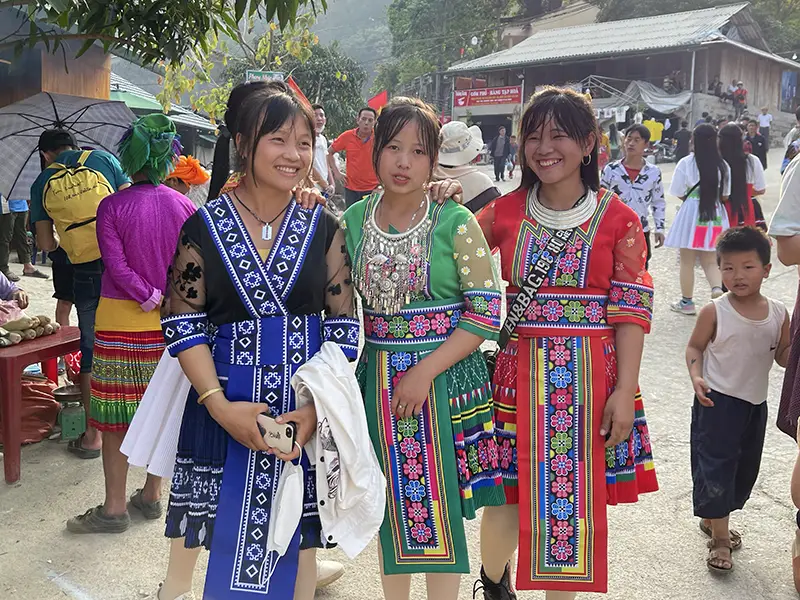
How to Behave in Vietnam: Cultural Do’s and Don’ts
Vietnamese culture emphasizes respect, modesty, and harmony—especially in public. When visiting temples or pagodas, dress conservatively: cover your shoulders and knees (a t-shirt and long pants or a sarong will do), and always remove your shoes before entering. In homes, the same rule applies—taking off your shoes at the door is expected.
Greetings are subtle: a smile or slight nod is often enough. Handshakes are common in cities but may feel too forward in rural areas. Avoid public displays of affection, loud voices, or overt gestures, as these can come across as disrespectful or intrusive.
When paying for things, especially in more traditional or rural settings, it’s polite to give and receive money (or items) using both hands. It’s a small gesture that shows respect.
At meals, wait for the oldest or host to begin eating first. Try to finish your bowl—it shows appreciation.
Bargaining is expected in markets, but keep it light and respectful: start at about half the asking price, but smile and don’t push too hard.

Accommodation in Vietnam: What Travelers Need to Know
Vietnam offers lodging for every budget. In Hanoi or Ho Chi Minh City, hostels start at $5–$10/night, with dorm beds and basic amenities. Mid-range hotels ($20–$50/night) in Hoi An or Da Nang offer cozy rooms and breakfast. Luxury resorts in Phu Quoc or Nha Trang run $100–$300/night, with pools and beachfront views.
Unique stays include homestays in Sapa or the Mekong Delta ($10–$30/night), where you live with local families and share home-cooked meals. In Ha Long Bay, overnight boat cruises ($50–$150/night) combine lodging with scenic tours.
Rural homestays may lack hot water, so clarify amenities upfront.
Vietnam Food: Must-Try Dishes
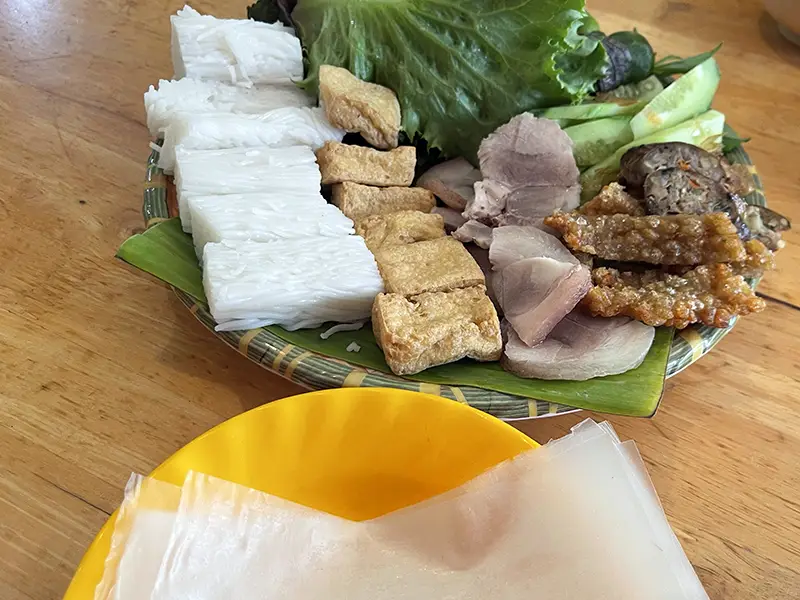
Vietnamese cuisine is a symphony of fresh herbs, tangy sauces, and balanced flavors. Pho, a fragrant beef or chicken noodle soup, is a popular breakfast dish usually enjoyed sitting down at street-side eateries or local restaurants. A bowl typically costs $1–$3 and comes steaming hot with fresh herbs and lime on the side. Banh mi, on the other hand, is a true grab-and-go classic—a crispy baguette filled with pate, pork, and pickled vegetables, often sold for $1–$2 from mobile carts or small shops. In Hue, don’t miss Bun Bo Hue, a rich and spicy beef noodle soup flavored with lemongrass and chili.
In the Mekong Delta, try ca loc nuong trui, grilled snakehead fish traditionally wrapped in lotus leaves and served with fresh herbs and rice paper. It’s a smoky, earthy dish that locals love, often enjoyed at riverside restaurants.
For dessert, try che—a chilled coconut milk pudding layered with beans, fruit, or jelly. Coffee lovers should sip on ca phe sua da, Vietnam’s strong iced coffee with sweetened condensed milk. Vegetarians will find tofu and fresh veggie rolls widely available.
Feeling adventurous? Vietnam also offers more daring dishes like trứng vịt lộn (balut—a fertilized duck egg) and nhộng(silkworm larvae), often stir-fried with lemongrass or roasted for a crunchy snack.
>> For a broader look at iconic dishes across the country, see our guide to Best Food to Try in Vietnam
Sustainable Travel Advice
Traveling sustainably in Vietnam helps preserve its beauty. To reduce plastic waste, carry a reusable water bottle and refuse single-use straws—many cafes now offer bamboo alternatives. Book tours that support local communities, like homestays in Sapa or eco-tours in the Mekong Delta, which fund ethnic minority villages. Avoid animal-based activities, such as elephant rides, which often involve unethical treatment.
Use public transport or rent bicycles in cities like Hoi An to cut emissions. Shop at local markets instead of chain stores to support small vendors. For souvenirs, choose handmade goods from cooperatives rather than mass-produced items.
Authentic Souvenirs to Bring Home from Vietnam
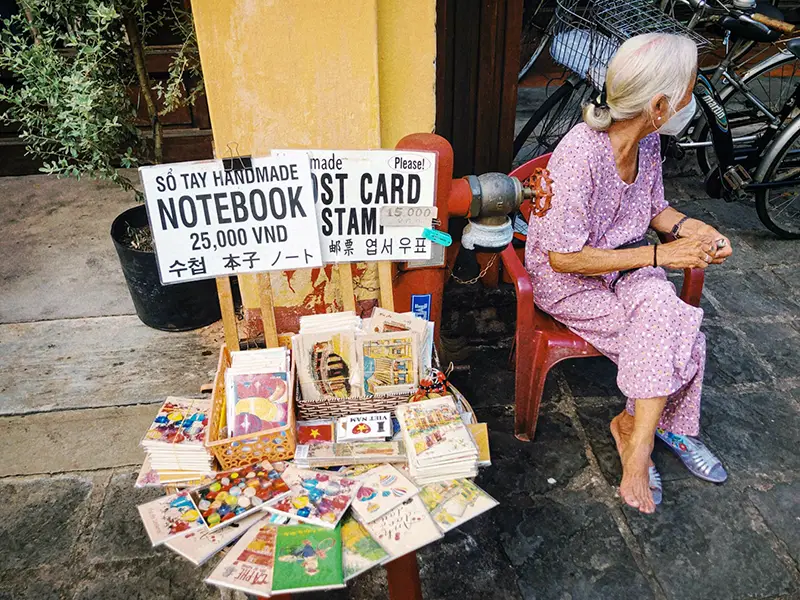
Vietnam’s souvenirs reflect its craftsmanship. In Hanoi, pick up lacquerware—hand-painted bowls or trays ($5–$20)—from Old Quarter shops. Hoi An is famous for silk lanterns ($10–$30), foldable and vibrant. In Sapa, buy handwoven textiles from Hmong or Dao artisans ($5–$15 for scarves). Conical hats (non la) cost $2–$5 and make iconic keepsakes.
Coffee also makes a great souvenir—Vietnam is known for its strong, flavorful beans. You’ll find locally roasted varieties in most supermarkets or specialty cafes, typically priced between $5–$10 a pack.
To avoid inflated prices, skip souvenir shops located near major tourist attractions or included as stops on day tours—these are often heavily marked up and operate on commission deals with tour operators. Instead, look for independent craft shops or cooperatives, especially in artisan villages or quieter neighborhoods, where quality and pricing tend to be more reasonable.
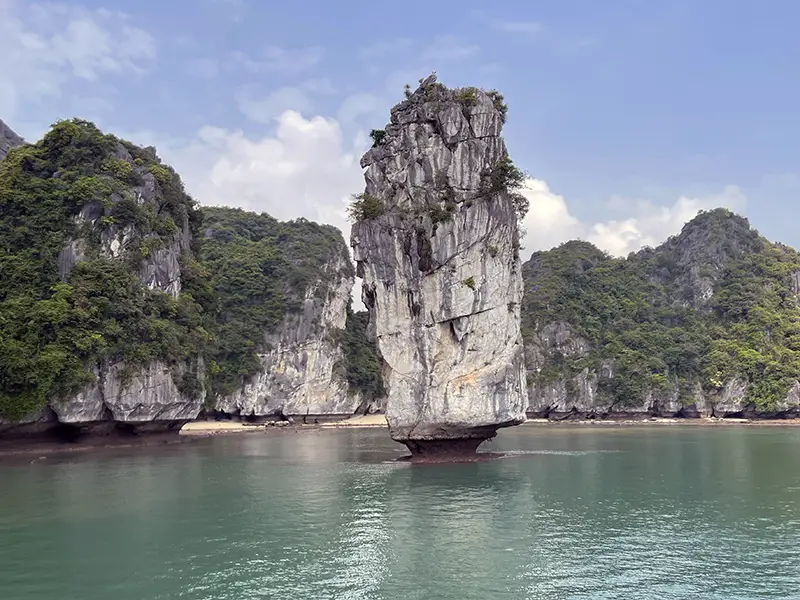
FAQ
Vietnam is considered safe for visitors, with low rates of violent crime. Petty theft like pickpocketing can occur in crowded areas, so keep belongings secure. Stick to reputable transport and tour operators to avoid scams.
November to April offers dry, pleasant weather across most regions, ideal for exploring. May and October provide fewer crowds and lower costs, while June to September is rainy but budget-friendly in the south.
Visa requirements depend on your nationality. Some countries enjoy visa-free entry for 15–45 days, while others need an e-visa ($25) or visa on arrival. Check with the Vietnamese embassy for specifics.
Daily costs range from $25–$40 for budget travelers, $50–$100 for mid-range, and $150+ for luxury. Expect to spend on accommodations, food, transport, and activities, with cash needed for smaller vendors.
Don’t miss Hanoi’s vibrant streets, Ha Long Bay’s stunning karsts, Hoi An’s charming lanterns, Hue’s historic citadel, Ho Chi Minh City’s energy, and the Mekong Delta’s waterways.
Yes, Vietnam is welcoming for solo female travelers. Exercise standard precautions, like avoiding isolated areas at night and dressing modestly at cultural sites, to ensure a comfortable trip.
Wi-Fi is widely available in urban areas, and 4G and 5G coverage is strong in cities. Rural areas may have slower connections. Tourist SIM cards offer ample data for $5–$10/month.
Avoid tap water and opt for bottled. Hepatitis A, Typhoid, and Tetanus vaccines are recommended.

Key Takeaways from This Vietnam Travel Guide
With this Vietnam Travel Guide, you now have a practical, clear, and experience-driven foundation to plan your trip with confidence. From understanding visa rules to knowing where to go and what to pack, you’re ready to explore Vietnam with fewer surprises and more meaningful moments.
Whether you’re staying for a week or wandering for a month, revisit this guide whenever you need support. And for deeper insights, itinerary inspiration, or new updates, check out the Vietnam section on Guides and Stories.
Wishing you a smooth journey and unforgettable discoveries in Vietnam!

